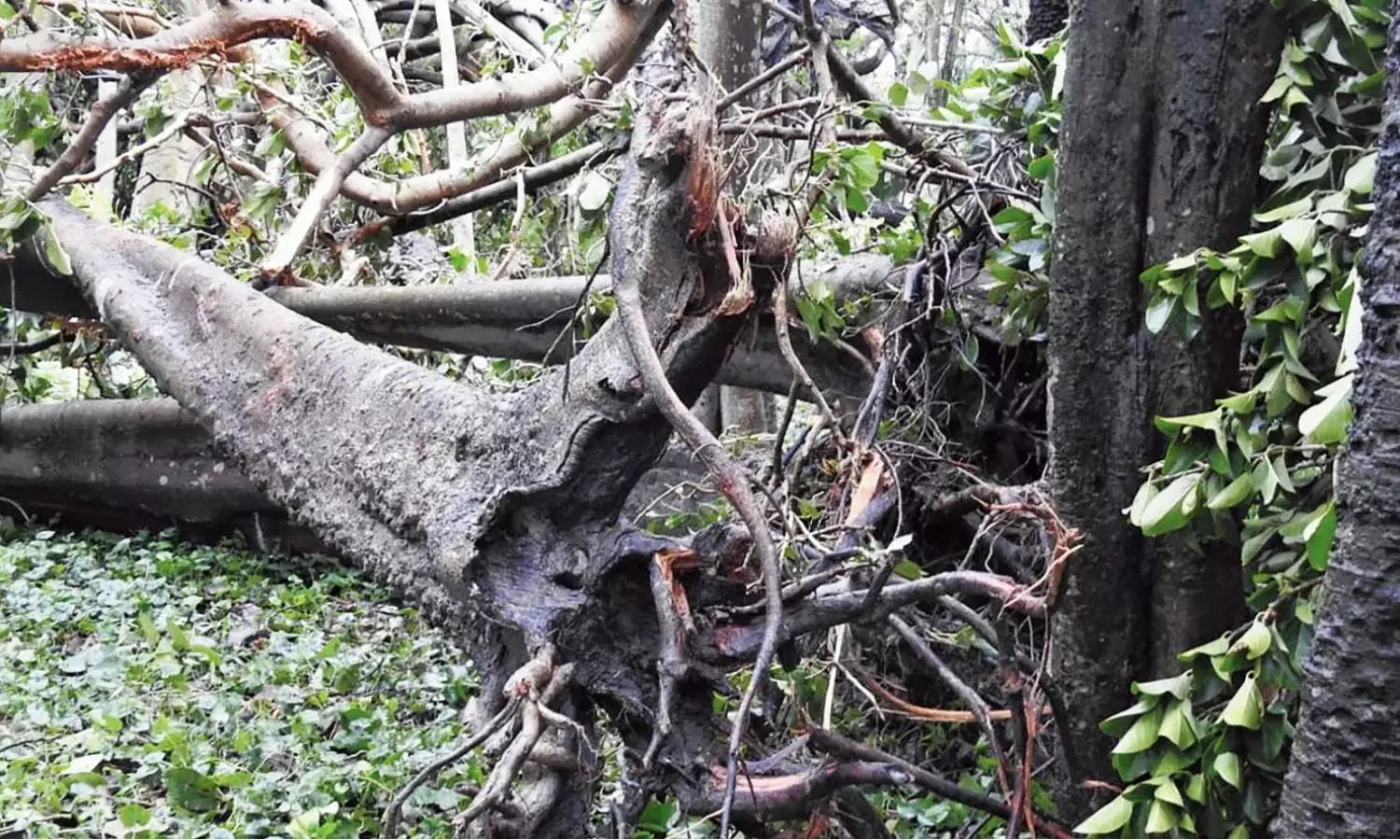Great Banyan Tree, 342 Years Old, Falls to Amphan
It survived two great cyclones in 1864 and 1867

Every tree has a story, and a history of its own. The cyclone Amphan in West Bengal will rewrite the history of the oldest and biggest banyan tree that stood in regal majesty at the Botanical Gardens near Howrah in Kolkata. It was known as the Great Banyan tree and was 342 years old. One of the most anticipated attractions for the tourists crowding Kolkata, it was magnificent, like a king, and lorded over the other trees and the Garden as well, undaunted by all previous natural onslaughts the city has witnessed through history.
In Hindu mythology, the leaf of the Banyan is said to be the resting place of the god Krishna, who after consuming all the universe in the age of destruction, absorbs everything created and turns himself into a child so small as to fit into the tiny leaf of the Banyan, which keeps floating in the void.
According to the mythologist Devadutt Pattanaik, “When the British came to India, they noticed that members of the trading or Bania community used to gather under a large shady fig tree, which they named the Banyan, from Bania.”
Allahabad-based scientist Shiv Kumar says the Great Banyan near Howrah was the world’s largest banyan tree, 342 years old with the circumference of its core stem once measuring 15 meters and that of its peripheral stem now measuring over 1.08 km.
The core stem was removed in 1925 and the tree thereafter stood only on its external peripheral stems, solely comprised of shoots emanating from its branches and taking root in the ground, said Kumar, who worked as a scientist at the Acharya Jagadish Chandra Bose Indian Botanic Garden in Howrah from 2006 to 2012.
The Botanical Survey of India uses the picture of this tree as its logo. Its main trunk became diseased after it was struck by two cyclones, so in 1925 the main trunk was amputated to keep the remainder healthy. This means that the tree continued to flourish without its main trunk, leaving it as a clonal colony rather than a single tree.
A 330-metre (1,080 ft) road was built around its circumference, but the tree continues to spread beyond it.
Amphan has badly damaged the density of the tree’s peripheral stem and branches, said Kumar, adding that the extent of the exact damage could be ascertained only after its closer inspection.
As children visiting the city during our summer holidays, we would beg our parents to take us to the Botanical Gardens just to take a look at his giant tree. Young lovers would go there just to enjoy the shades, though security personnel kept a sharp eye for possible violators of the tree and its beauty.
With its large number of aerial roots which grow from the branches and run vertically to the ground, the Great Banyan is said to appear more like a dense forest than an individual tree. More than 2,800 aerial prop roots descended down into the earth, appearing like individual trees. It was the main draw of the botanical garden, and though no one knows its exact origin, it has been showing up in guidebooks since the 1800s.
It survived two great cyclones in 1864 and 1867, when some of its main branches were broken, exposing its main trunk which led to a damaging fungal attack. By 1925, the main trunk, which once measured over 50 feet wide, had to be removed.
Amphan has destroyed several old prop roots as winds at a speed of 100 kmph coursed through the Botanical Garden, damaging more than 1,000 trees though the actual damage can be ascertained only after a week or so.
Dilip Chitre’s famous poem ‘The Felling of the Banyan Tree’ focuses on a particular time in a family's history when a drastic decision has to be made by the father. This decision involves the demolition of houses on a hill and the cutting down of a huge tree which has stood for centuries in the same spot. In the shape of the banyan there is the symbol of family itself, the great rooted tree representing centuries of living, of connection between earth and heaven. It too is cut down.
The second stanza gives the reader all the details...how long, how much, how many. A whole ecosystem is gradually brought down, extinguished perhaps.
Vihang Naik, in his long poem ‘Banyan Tree’, describes that with the change of era and due to the blind race of industrialisation and advancement in technology, many trees like the banyan have been cut down and the natural resources are ether destroyed or polluted. Gieve Patel’s poem ‘On Killing a Tree’ writes that killing a tree is not so easy, and a single blow of a knife will not suffice.
But Amphan has finally killed the Great Banyan Tree. And this, according to environmentalists, will have a serious impact on the city’s microclimate, biodiversity and oxygen cover.



